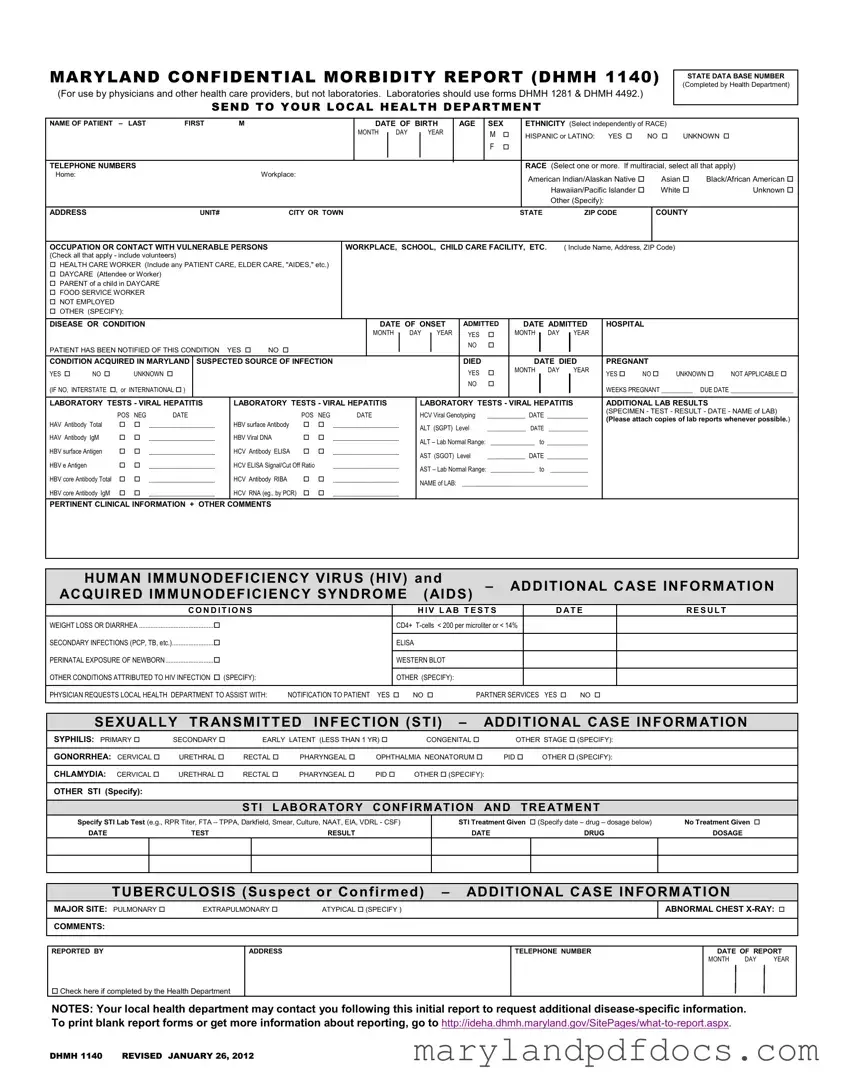What is the purpose of the Maryland Confidential Morbidity Report form?
The Maryland Confidential Morbidity Report form is designed for healthcare providers to report specific diseases and conditions to local health departments. This report helps public health officials track and manage disease outbreaks, ensuring that appropriate measures are taken to protect community health. It is important for physicians and other healthcare providers to fill out this form accurately to facilitate timely responses to public health concerns.
Who is required to complete this form?
This form is primarily for use by physicians and healthcare providers. It's important to note that laboratories should not use this form; instead, they should utilize forms DHMH 1281 and DHMH 4492 for reporting. Healthcare providers, including those working in hospitals, clinics, and other medical settings, are responsible for submitting the report when they diagnose a reportable condition.
What information is needed to complete the form?
To complete the Maryland Confidential Morbidity Report form, healthcare providers must provide various details about the patient, including their name, date of birth, sex, ethnicity, and race. Additionally, information regarding the disease or condition, date of onset, hospital admission details, and laboratory test results must be included. It’s also essential to indicate if the patient has been notified of their condition and whether the condition was acquired in Maryland.
How is patient confidentiality maintained when using this form?
Patient confidentiality is a top priority when using the Maryland Confidential Morbidity Report form. The form is designed to be confidential, and the information collected is used solely for public health purposes. Local health departments are responsible for safeguarding this information and ensuring that it is only accessible to authorized personnel. Providers should take care to submit the form securely and avoid sharing any identifiable patient information outside of the reporting process.
What should I do if I need more information about reporting?
If you require additional information about how to report or need blank report forms, you can visit the Maryland Department of Health's website at http://ideha.dhmh.maryland.gov/SitePages/what-to-report.aspx. This site provides resources and guidance on the reporting process, ensuring that healthcare providers have the necessary tools to comply with reporting requirements effectively.

